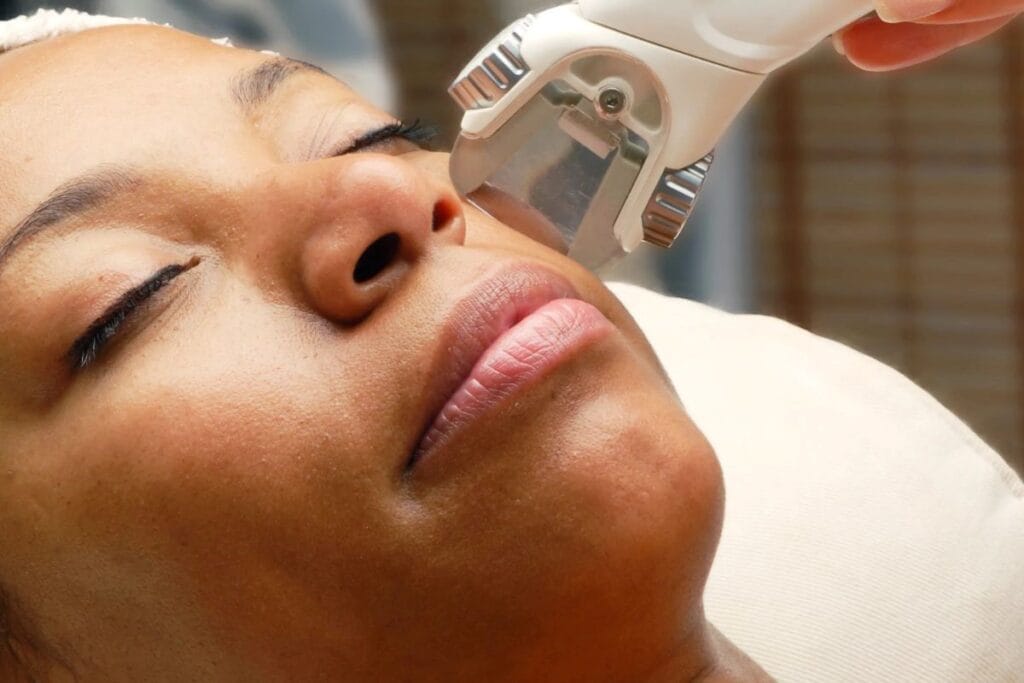Are you tired of the endless cycle of shaving, waxing, or threading? If you’re dreaming of silky-smooth skin without the hassle, laser hair removal might just be your new best friend. But with a variety of technologies available and unique considerations for Indian skin tones, how do you know which method will give you the results you’ve been longing for? In this blog post, we’ll dive deep into the world of laser hair removal to uncover which technology delivers optimal results tailored specifically for Indian skin. Say goodbye to unwanted hair and hello to confidence as we explore everything from effectiveness to safety—let’s find your path to effortless beauty together!
Introduction to laser hair removal and its popularity among Indian women
The Best laser hair removal has taken the beauty world by storm, especially among Indian women seeking smooth, hair-free skin. With the hustle and bustle of everyday life, many are turning to this innovative solution for a long-lasting alternative to traditional methods like waxing or shaving. As we embrace modern technology in our beauty routines, it’s essential to understand how laser treatments can cater specifically to Indian skin tones.
The curiosity around laser treatment for laser treatment for hair removal is growing rapidly. Many want to know which technology truly delivers optimal results without compromising on safety or effectiveness. Let’s delve into the fascinating world of laser hair removal and uncover what you need to know before taking that step towards silky perfection!

Understanding the different types of laser technology used for hair removal
Laser hair removal technology has evolved significantly over the years, providing various options to suit diverse skin types and hair colors. The most commonly used lasers include Alexandrite, Diode, and Nd:YAG.
Alexandrite lasers are popular for their speed and effectiveness on lighter skin tones. They target melanin in the hair follicles efficiently but may not be ideal for darker skin due to a higher risk of pigmentation issues.
Diode lasers are versatile and can be effective on a range of skin types. Their longer wavelength allows deeper penetration while minimizing damage to surrounding tissue.
Nd:YAG lasers shine when it comes to treating darker complexions. They penetrate deeper into the skin without targeting surface pigment, resulting in safer treatments for Indian skin.
Understanding these technologies helps individuals make informed choices about which laser treatment will yield optimal results tailored specifically for their needs.

Comparison of traditional lasers vs. newer technologies for Indian skin
Traditional laser hair treatment, like ruby and alexandrite, have been popular in many clinics. However, they often struggle with the unique characteristics of Indian skin tones. These lasers can sometimes lead to uneven results or even skin irritation.
Newer technologies are now revolutionizing laser hair removal for diverse skin types. Diode and Nd:YAG lasers are gaining traction among Indian clients for their adaptability. They penetrate deeper into the skin while minimizing damage to the outer layer. This is crucial for achieving optimal results without compromising safety.
Moreover, these advanced systems feature cooling mechanisms that enhance comfort during treatment. The precision of newer devices allows practitioners to tailor sessions according to individual needs effectively.
As technology evolves, it’s essential to choose treatments designed specifically for your skin type. Those seeking effective solutions should consider options that address both efficacy and safety comprehensively.
Factors to consider when choosing the right laser for Indian skin
Choosing the right laser for hair removal on Indian skin involves several important factors. Skin tone and type play a crucial role in determining which technology will be effective. Darker skin typically requires lasers with longer wavelengths, as they target hair follicles without affecting surrounding skin.
Another consideration is hair thickness and color. Coarse, dark hair responds well to certain laser types compared to fine or light-colored strands. Consultations with experts can help identify your specific needs.
Additionally, look into the clinic’s technology offerings. Candela GentleYAG and Nd:YAG lasers are popular choices for darker skin tones due to their safety profiles.
Experience of the technician is equally vital. A skilled practitioner can tailor treatments based on individual responses, enhancing effectiveness while minimizing risks like burns or hyperpigmentation.
Lastly, always prioritize clinics that customize their approach over those offering one-size-fits-all solutions; this ensures optimal results tailored just for you.
Expert tips on prepping your skin and managing pain during the procedure
Preparing your skin for laser hair removal is essential. Start by exfoliating a few days before your session. This helps remove dead skin cells and allows the laser to target hair follicles more effectively.
Hydration is key. Drink plenty of water leading up to your treatment. Well-hydrated skin can better withstand the procedure, making it less painful.
On the day of treatment, avoid sun exposure and skip any skincare products that contain strong ingredients like retinol or acids. Cleanse your skin gently before arriving at the clinic.
Managing pain during the procedure can be achieved with topical numbing creams, which many clinics offer. Discuss this option with your technician beforehand.
Breathing techniques also help ease discomfort during sessions. Focus on slow, deep breaths to calm yourself as you undergo each pulse of the laser treatment for hair removal process.

Aftercare tips and potential side effects for Indian skin types
After your laser hair removal treatment, proper aftercare is essential for Indian skin types. First, avoid direct sunlight for at least two weeks. UV exposure can lead to pigmentation issues.
Keep the treated area clean and moisturized. Use a gentle cleanser and apply a soothing aloe vera gel or an unscented moisturizer to minimize irritation.
It’s common to experience redness or swelling post-treatment. These side effects usually subside within a few hours but can last longer in some cases. If discomfort persists, consider applying cold compresses to alleviate symptoms.
Stay hydrated and avoid hot baths or saunas for 48 hours after your session. This helps prevent inflammation.
Watch out for any unusual changes, such as blistering or prolonged redness; these may require medical attention promptly. Always consult with your practitioner if you have concerns regarding specific reactions on your skin type.

Conclusion: Making an informed decision based on your individual needs and preferences
When it comes to laser hair removal, understanding your skin type and the available technologies is crucial. Indian skin, with its unique characteristics, requires careful consideration of the laser options best suited for optimal results. The choice between traditional lasers and advanced technologies can significantly impact your experience and outcomes.
Real-life success stories from clients in India show that effective treatments are possible with the right approach. Many have shared their experiences of how they achieved smoother skin and greater confidence through tailored laser treatments designed for their specific needs.
Prepping your skin properly before treatment can enhance results while managing any discomfort during sessions is essential for a positive experience. Aftercare should not be overlooked either; knowing what to expect post-treatment will help you maintain those great results without complications.
Choosing the best laser hair removal method involves weighing various factors such as technology type, individual pain thresholds, expert recommendations, and aftercare demands. Each person’s journey will differ based on personal goals and preferences regarding aesthetics.
Take time to research local clinics offering specialized services like laser hair removal treatment in Bangalore. Seek out qualified practitioners who understand Indian skin types thoroughly—this knowledge will guide you toward making a well-informed decision that aligns with your expectations and lifestyle. Your path to smooth skin starts here; consider all aspects carefully to achieve lasting satisfaction.

